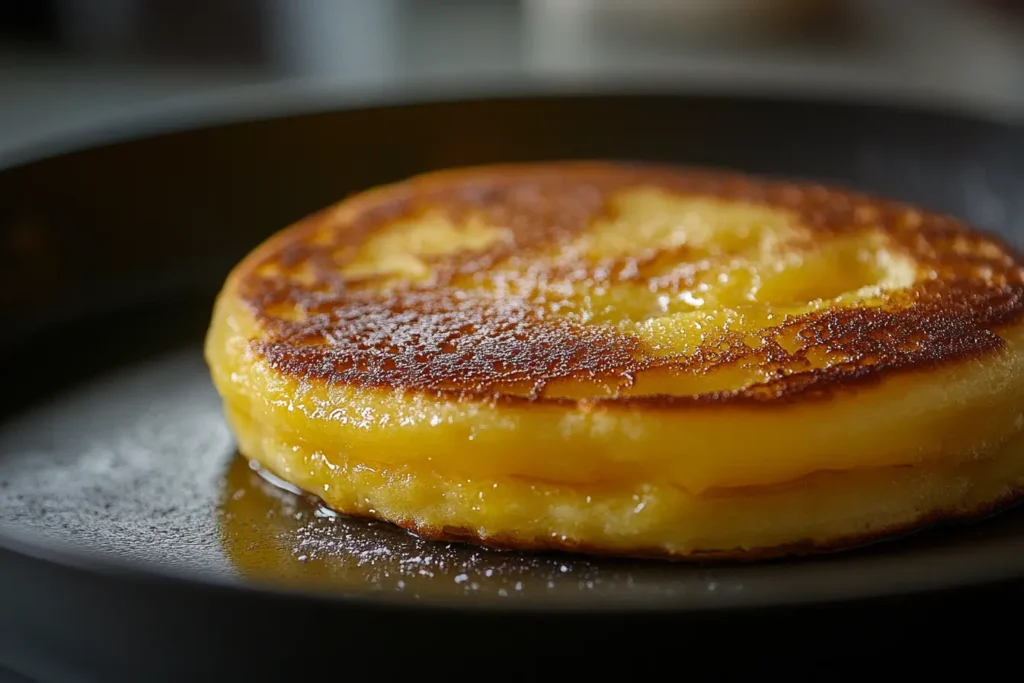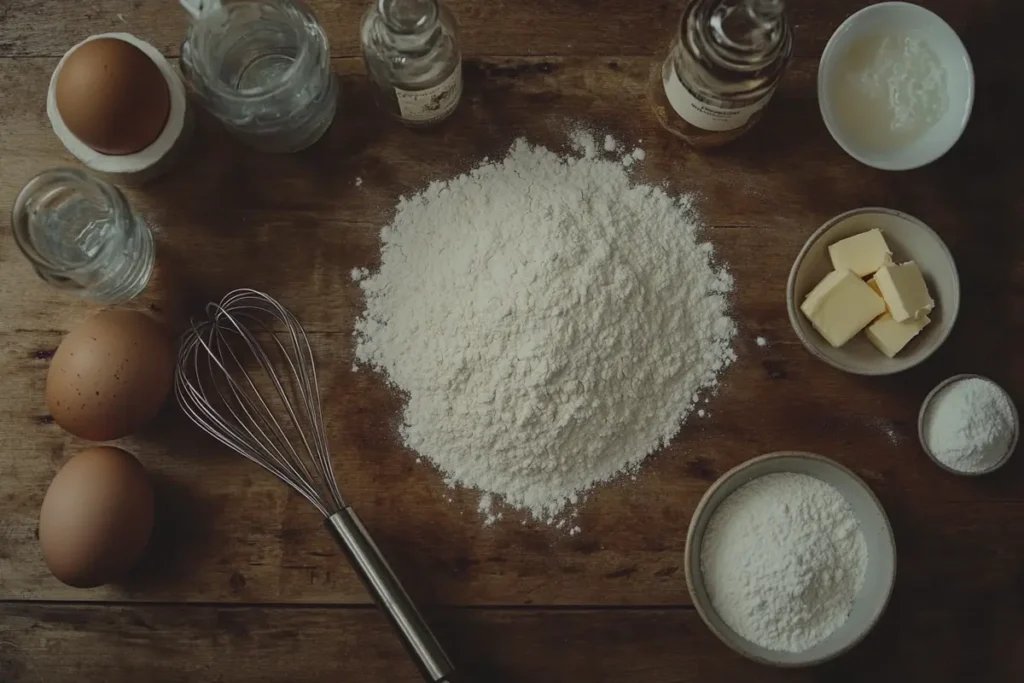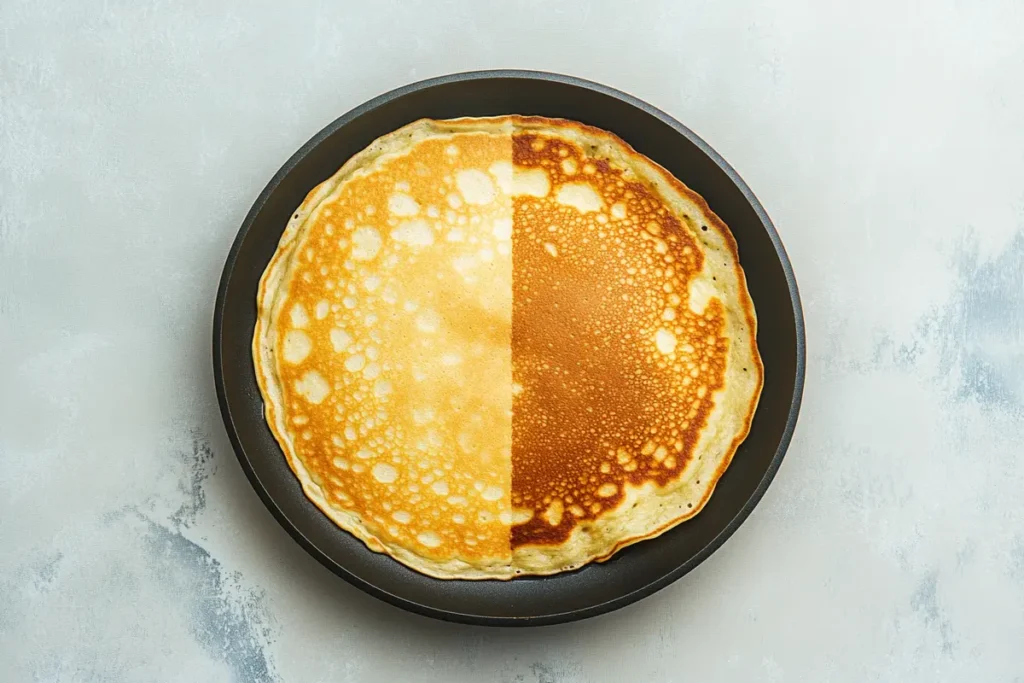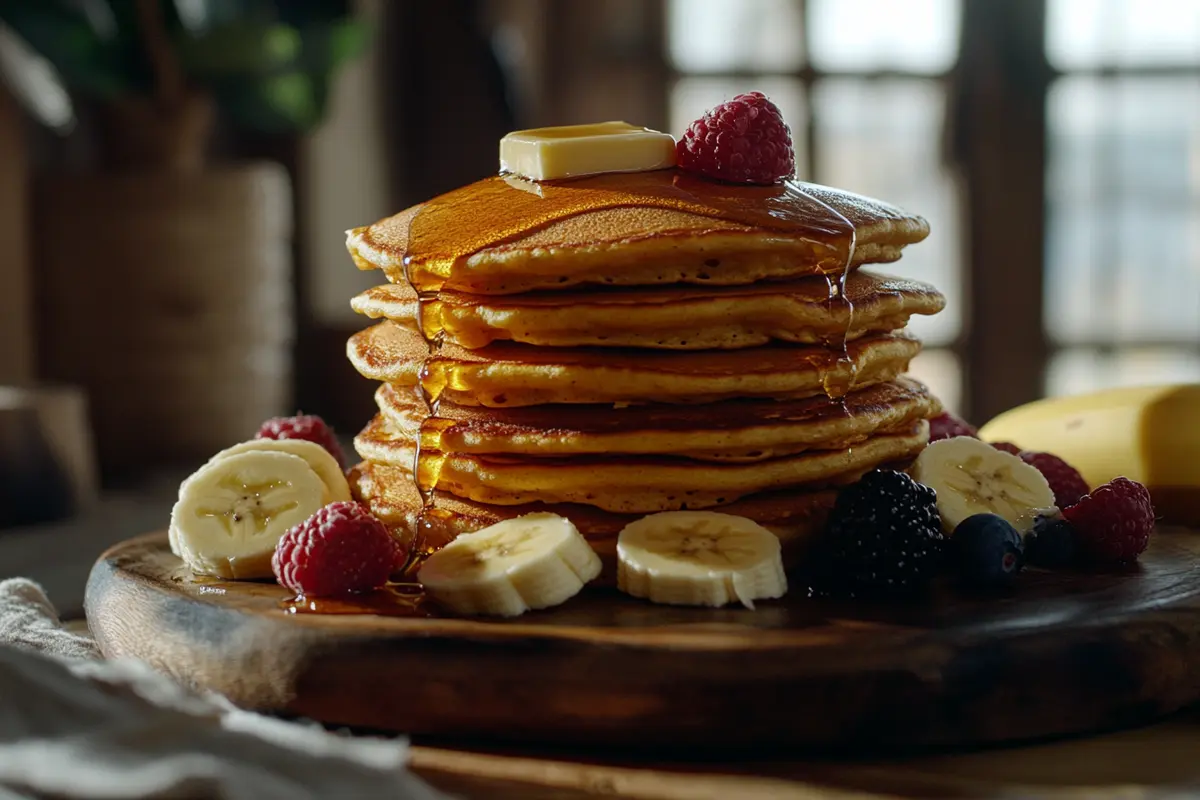Introduction
How to Get Crispy Edges on Your Pancakes is a game-changer for your breakfast. Perfectly crispy edges transform ordinary pancakes into a flavorful delight. Though it takes some finesse with batter, heat, and flipping, it’s easier than you think with the right tips.
This guide covers everything—from the science behind crispy edges to tools, techniques, and common mistakes. Whether you’re a beginner or a pro, these tips will help you master golden, crispy pancake edges. Let’s dive in!
Table of Contents
How to Get Crispy Edges on Your Pancakes Fundamentals
The Appeal of Crispy Pancakes
Crispy pancakes? Oh, they’re a whole different ballgame! That golden, crunchy edge is not just about texture—it’s about contrast. The crispiness balances the soft, fluffy interior, creating a bite that’s equal parts tender and crunchy. It’s like a little symphony for your taste buds. Plus, crispy edges hold up better to toppings, so every drizzle of syrup or sprinkle of fruit is perfectly showcased.
Common Struggles When Trying to Achieve Crispy Edges
Let’s face it: crispy edges can be elusive. Many people end up with pancakes that are soft all over or, worse, soggy. This often happens due to inconsistent heat, overly thick batter, or skipping the fat (like butter or oil) that creates that perfect golden crust. And who hasn’t flipped a pancake too soon, only to ruin its crispy potential? Oh, the heartbreak!
Overview of Techniques to Perfect Crispy Pancakes
To get those drool-worthy edges, you need a few key techniques. It all starts with the batter—yes, the right pancake batter can make or break your quest for crispiness. But that’s just the beginning. Your choice of pan, the cooking fat you use, and even how you pour the batter all play a role. Don’t worry; we’ll break it down step by step in this article.

By understanding the science, using the right tools, and following expert tips, you’ll soon be flipping pancakes like a pro. So, let’s dive deeper into the process and start mastering those crispy pancake edges!
Understanding the Science of Crispy Edges
The Role of Heat in Pancake Texture
When it comes to how to get crispy edges on your pancakes, heat is key. Medium-high heat is the sweet spot—too low, and your pancakes stay soft; too high, and the edges burn before the inside cooks. Proper heat caramelizes sugars and fats, creating that perfect golden crust.
Even heat distribution is just as important. A cast-iron skillet works wonders, retaining heat evenly to ensure every inch of your pancake achieves crispiness.
How Batter Consistency Affects Pancake Edges
Ever wondered why your pancakes lack those crispy edges like the ones from diners? The secret is often in the batter. A thinner batter spreads easily, creating crispier edges, while a thicker batter results in fluffy but soft pancakes.
For how to get crispy edges on your pancakes, aim for a batter consistency like heavy cream. Adding sugar or melted butter promotes caramelization, boosting both color and crispiness. Using all-purpose flour is great, but a tablespoon of cornstarch can make edges extra crisp. For lighter, crunchier edges, try adding sparkling water or club soda to the batter.
Why Does Sugar and Fat Matter for Crispy Edges?
Let’s talk science for a moment—don’t worry, no textbooks required. Sugar caramelizes when exposed to heat, forming that golden brown crust we all love. Meanwhile, fats like butter or oil not only prevent sticking but also fry the batter’s edges, giving them that crispy bite.
For best results, use a combination of butter and oil. Butter adds flavor, while oil has a higher smoke point, ensuring you don’t burn your pancakes before they crisp. A little goes a long way here—don’t drown your pan in fat, but make sure the surface is lightly coated.
Ingredients for Crispy Pancakes
Key Ingredients to Include for Crispiness
When it comes to mastering how to get crispy edges on your pancakes, the ingredients you choose can make all the difference. Each ingredient plays a role in creating those deliciously golden edges that crunch perfectly with every bite.
- Butter or Oil: The fat you use is essential for frying the edges. Butter is rich in flavor, but mixing it with oil helps prevent burning since oil has a higher smoke point. This combination is a pro trick for crispy pancake edges.
- Sugar: A little sugar in the batter goes a long way. When sugar meets heat, it caramelizes, forming that irresistible golden crust around the edges. Don’t go overboard, though—a tablespoon per batch is often enough.
- Milk or Buttermilk: Liquids like milk or buttermilk help create a silky batter that spreads evenly on the pan, making it easier to achieve thin, crispy edges. Buttermilk, in particular, adds a slight tang and contributes to the pancake’s browning.

Optional Additions for Enhanced Crispiness
If you want to take things up a notch, these optional ingredients can help you achieve an even better texture while still delivering on flavor:
- Cornstarch: Adding one to two tablespoons of cornstarch to your batter can help create a lighter pancake with crisper edges. Cornstarch increases the batter’s resistance to absorbing too much oil, which means crunchier edges every time.
- Baking Soda or Baking Powder: These leavening agents add air bubbles to the batter, ensuring that the pancakes are light inside while still allowing the edges to crisp.
- Sparkling Water or Club Soda: Swap some of the milk for sparkling water to introduce tiny bubbles into the batter. The carbonation not only makes the pancakes airy but also promotes even browning on the edges.
Why Ingredient Ratios Are Crucial
Understanding how to get crispy edges on your pancakes starts with perfecting the ratios. Too much liquid makes the batter too thin, while too little liquid makes it thick and hard to spread evenly. A good rule of thumb is to aim for a batter consistency similar to heavy cream.
When experimenting with add-ins like cornstarch or sparkling water, remember to adjust the liquid amounts slightly to maintain balance. Crispiness is all about precision, but with a little trial and error, you’ll find your magic formula.
Cooking Tools and Equipment
Essential Tools for Perfect Pancakes with Crispy Edges
If you want to master how to get crispy edges on your pancakes, the tools you use in the kitchen are just as important as the ingredients. The right equipment can elevate your pancake game, making the process not only easier but also more consistent.
- Non-Stick Pan vs. Cast Iron Skillet: A non-stick pan is beginner-friendly and makes flipping pancakes a breeze. However, if you’re after truly crispy edges, a cast iron skillet is the way to go. Why? Cast iron retains and distributes heat evenly, creating the perfect environment for those golden, crunchy edges.
- Spatulas for Flipping: Use a thin, flexible spatula for smooth and precise flipping. Metal spatulas work best for cast iron, while silicone spatulas are ideal for non-stick pans to avoid scratching the surface.
- Ladles and Measuring Cups: To get uniform pancakes (and ensure all of them have crispy edges), use a ladle or measuring cup to pour the batter. This gives you more control over the size and thickness of each pancake.
Why Pan Size and Material Matter
The size and material of your pan are crucial for how to get crispy edges on your pancakes. Small pans can overcrowd the batter, blocking heat circulation and leading to uneven cooking. A larger pan, however, lets the batter spread thinly, allowing the edges to crisp up beautifully.
For materials, cast iron is unbeatable. It retains high heat, caramelizing the edges quickly without overcooking the center. Non-stick pans are beginner-friendly but lack the heat retention needed for truly crispy edges.
A Few Bonus Tips for the Best Results
- Preheat your pan for a few minutes before adding the batter. A properly heated pan is essential for how to get crispy edges on your pancakes.
- Use just enough butter or oil to lightly coat the pan—too much fat can result in greasy pancakes instead of crispy ones.
- Experiment with pan settings to find the heat level that works best for your stove and pan combination.
Step-by-Step Guide to Getting Crispy Edges on Your Pancakes
Preparing the Perfect Pancake Batter
Achieving how to get crispy edges on your pancakes starts with crafting the perfect batter. A smooth, well-balanced batter ensures even cooking and allows those edges to crisp up beautifully.
- Sift Dry Ingredients: Sifting flour, sugar, and any optional cornstarch ensures there are no lumps in your batter. This helps the batter spread evenly, a crucial step for crispy edges.
- Mix Wet and Dry Ingredients Gently: Combine your wet ingredients—milk or buttermilk, eggs, and melted butter—separately before folding them into the dry mixture. Avoid overmixing, as this can make your pancakes dense and ruin the texture. A few lumps in the batter are perfectly fine.
Heating the Pan to the Right Temperature
Getting the right pan temperature is the cornerstone of how to get crispy edges on your pancakes. If the pan isn’t hot enough, the batter won’t sizzle, and you’ll miss out on that golden crunch.
- Preheat the Pan: Allow your pan—preferably a cast iron skillet—to heat on medium-high for 3–5 minutes. To test if the pan is ready, sprinkle a few drops of water onto the surface. If the water sizzles and evaporates immediately, it’s time to cook.
- Add Fat: Before pouring the batter, add a small amount of butter or oil to the pan, ensuring it coats the surface evenly. This step is crucial for creating the crispy, caramelized edges you’re aiming for.
Cooking Pancakes for Crispy Edges
The cooking technique is just as important as the batter and heat. Follow these steps for foolproof results:
- Pour the Batter: Use a ladle or measuring cup to pour the batter into the center of the pan, allowing it to naturally spread. For extra-crispy edges, try tilting the pan slightly to let the batter form thinner edges.
- Wait for Bubbles to Form: As the pancake cooks, you’ll notice bubbles forming on the surface. This is your cue to check if the edges have started to crisp. Once the edges appear golden and firm, it’s time to flip.
- Flip Carefully: Use a thin spatula to flip the pancake. Avoid pressing down on it after flipping—this can flatten the pancake and reduce crispiness.
Tips for Batch Cooking Without Losing Crispiness
When making multiple pancakes, keeping the first ones warm and crispy can be a challenge. Here’s how to do it:
- Place cooked pancakes on a wire rack set over a baking sheet in a preheated oven at 200°F. This prevents them from becoming soggy.
- Avoid stacking pancakes right away, as the steam trapped between them can soften the edges. Instead, keep them in a single layer.
These step-by-step instructions are a foolproof way to master how to get crispy edges on your pancakes. Once you nail this process, you’ll be serving up restaurant-quality pancakes every time.
Common Mistakes and How to Avoid Them
Mistakes That Prevent Crispy Edges
If you’re struggling with how to get crispy edges on your pancakes, common mistakes could be to blame. Overcrowding the pan is a major issue—too much batter causes steaming instead of frying, softening the edges. Skipping butter or oil is another setback since fat is crucial for those golden, crunchy edges.
Flipping too early is also problematic. Wait until bubbles pop and edges firm up before flipping, so the batter has time to caramelize. Finally, watch your heat—too low creates pale, soft edges, while too high burns the edges before the center cooks.
Troubleshooting Tips for Beginners
If you’re finding it tricky to figure out how to get crispy edges on your pancakes, start small. Use a medium-sized pan and cook one pancake at a time to avoid crowding. Also, always preheat your pan and test it with a few water droplets to ensure it’s at the right temperature.
By fixing these small errors, you’ll unlock the secret to perfect crispy pancake edges.

Serving and Pairing Ideas for Crispy Pancakes
How to Serve Pancakes Without Losing Crispiness
Once you’ve mastered how to get crispy edges on your pancakes, the way you serve them can make or break the experience. To preserve the crunch, avoid stacking pancakes right after cooking. Instead, place them in a single layer on a wire rack. This prevents steam from softening the edges.
If you’re serving a crowd, keep your pancakes warm in an oven set at 200°F. Be sure not to cover them tightly, as trapped steam will undo all your hard work to achieve those crispy edges.
Delicious Toppings for Crispy Pancakes
Pairing the right toppings with crispy pancake edges elevates both flavor and texture. For a classic touch, drizzle maple syrup generously, letting it pool in the crunchy ridges. Fresh berries or sliced bananas add a sweet, vibrant contrast that pairs perfectly with the crispiness.
For a savory option, try creamy avocado or sautéed mushrooms. These choices showcase the versatility of how to get crispy edges on your pancakes. Whether you go sweet or savory, preserving that crispiness ensures every bite is absolutely unforgettable.
Frequently Asked Questions
How to crisp up pancakes?
To crisp up pancakes, start by using a cast iron skillet or non-stick pan preheated to medium-high heat. Add a mix of butter and oil to the pan before pouring your batter. Ensure the edges of the batter spread thin to promote caramelization, which is key to achieving crispy pancake edges.
What is the best oil for crispy pancakes?
The best oil for how to get crispy edges on your pancakes is one with a high smoke point, such as vegetable oil, canola oil, or avocado oil. Pairing it with butter adds flavor while preventing burning. This combination helps fry the edges to golden perfection.
How to fix soggy pancakes?
If your pancakes turn out soggy, check your heat level. Low heat can cause pancakes to absorb too much oil. Use medium-high heat, and cook one pancake at a time to prevent overcrowding. To revive soggy pancakes, pop them in a preheated oven at 200°F on a wire rack for a few minutes to restore crispiness.
How to make perfect pancake shape?
To make perfect pancake shapes, use a ladle or measuring cup to pour consistent portions of batter into the center of the pan. For extra precision, use pancake molds. Ensure the pan is level, and let the batter spread naturally for well-rounded pancakes.
Conclusion
Mastering How to Get Crispy Edges on Your Pancakes
Now you know the secrets to how to get crispy edges on your pancakes! From using the right tools and ingredients to perfecting your heat levels and batter consistency, achieving those golden, crispy edges is all about technique and attention to detail.
Don’t forget to preheat your pan, use a mix of butter and oil, and let the edges caramelize for the perfect crunch. With a little practice, you’ll be serving pancakes with irresistible crispy pancake edges that everyone will rave about.
Remember, great pancakes aren’t just about taste—they’re also about texture. So, experiment, enjoy the process, and make breakfast unforgettable!

